|
Sierra Nevada landscapes are adapted to periodic fire, and many plants and animals benefit from the low to moderate intensity fires that once regularly occurred here. But today, large wildfires are having more severe impacts than fires did in previous centuries. The Castle Fire (2020) and the KNP Complex Fire (2021) affected large areas of these parks and neighboring lands. Numeorus post-fire issues impact public safety, infrastructure, and the health of park resources, such as giant sequoias, water quality in streams, cultural sites, and special status species. Burned Area Emergency Response (BAER)Burned Area Emergency Response (BAER) begins before the fire is completely contained or shortly thereafter. The BAER program brings in a team of specialists to assess the need for effective post-fire stabilization measures to protect human life, property, and critical natural and cultural resources. Teams include experts in hydrology, forestry, cultural resources, botany, wildlife biology, Geographic Information Systems, infrastructure, recreation, and environmental regulatory compliance. They meet with the park management team to identify values at risk from direct fire impacts or conditions following the fire. After spending time in the field making assessments, compiling data, and talking with park specialists, they make recommendations on specific, immediate actions needed (within one year post-fire). 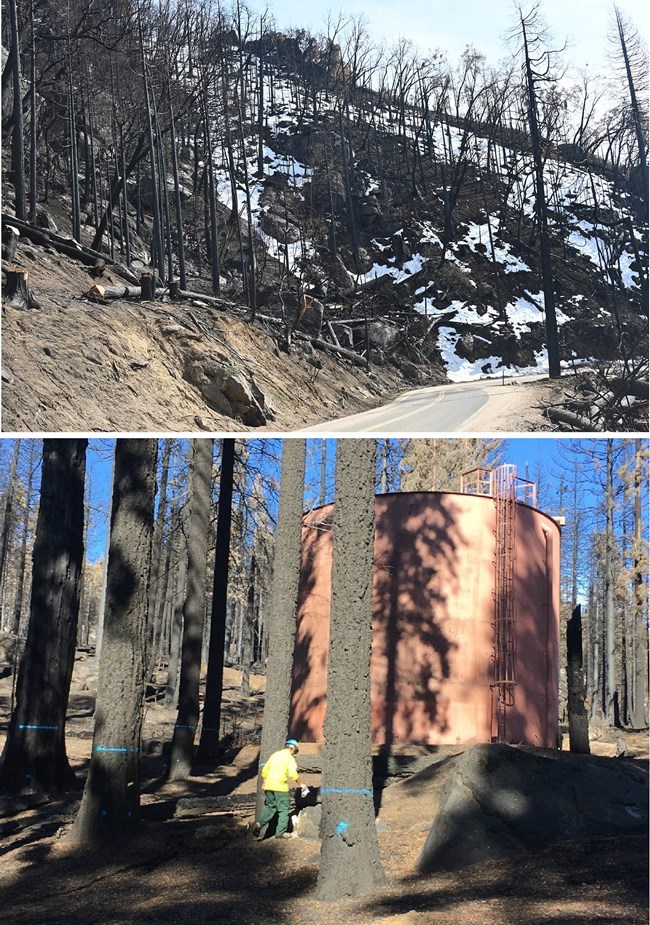
Lower photo: three hazard trees marked with blue paint that could be a threat to this effluent tank if they fell on it. NPS Photo KNP Complex BAER RecommendationsExamples of a few types of actions recommended for the KNP Complex Fire are provided below. Assess and Remove Hazardous Trees in Developed ZonesA tree hazard is defined as a tree (or portion of tree) with a recognizable potential for mechanical failure and/or uprooting AND one which has a potential for impacting a target (i.e. person, property, facility) in event the tree were to fail. The NPS estimates that there are thousands of trees within Sequoia and Kings Canyon National Parks that were impacted by the KNP Complex Fire and which are now considered hazardous due to the threat they pose to:
Given the imminent threat posed to some targets, the NPS has mitigated a portion of these hazard trees by trimming and/or removal, particularly in areas impacted by high severity fire, and is evaluating how to address the full extent of the hazards. 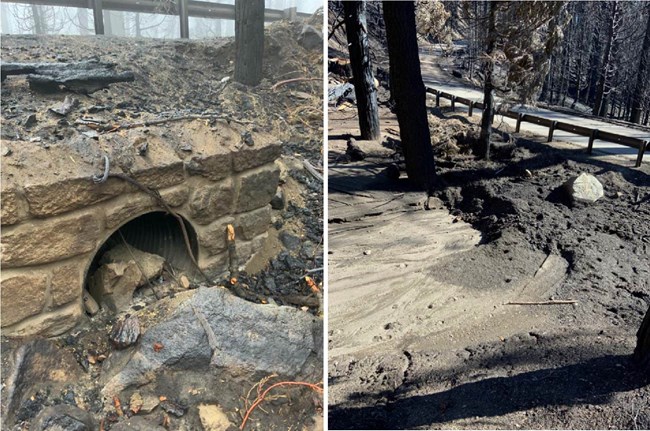
Right image: taken after a storm, sediment has completely filled and buried the culvert, so that it is no longer visible or able to drain water and sediment. NPS Photo Clear Culverts and Roads of Debris After StormsIncreased movement of rocks, sediment, and other debris occurs after storms, particularly in areas where vegetation and other stabilizing features of slopes may be disturbed or burned during the fire. It's critical to check culverts after storms to keep them cleared out. If they become blocked, soil, rocks, and woody material can deposit on roadways, and potentially wash out or otherwise damage parts of roads. We periodically check the roads during or after storms for debris flows or blocked culverts to protect public safety and minimize road damage. 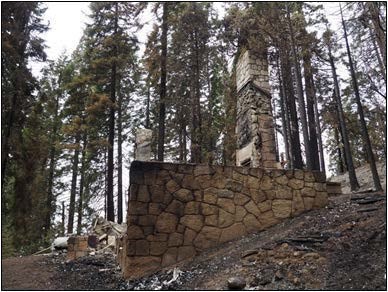
NPS Photo Cultural Resource Protection and StabilizationWhile loss of structures was minimal in the KNP Complex Fire, despite extensive efforts to protect them, a few historic structures were destroyed. Responses include securing the sites from uncontrolled access due to safety concerns and to prevent looting and vandalism. Longer term responses may include removing the remains of buildings or other structures or stabilizing them to address safety issues.In addition to historic structures, many historic and prehistoric cultural sites were within the burn perimeter and will be visited this summer to assess whether they were damaged and whether they need stabilization. The plan also recommends increasing staff presence to protect cultural sites that are now visible and could be damaged.
While the first year of BAER work focuses on mitigating and addressing the most critical issues and threats the year following a fire, Burned Area Rehabilitation takes additional actions to protect resources in the first five post-fire years. Burned Area Rehabilitation (BAR)The Burned Area Rehabilitation (BAR) program aims to protect resources by repairing or improving burned landscapes unlikely to recover naturally to healthy conditions and to repair or replace fire-damaged minor assets, such as foot bridges and fences. BAR projects occur within the first five years following a wildfire. In large burned areas, prioritization is needed to focus limited funds on the most critical resource protection needs. 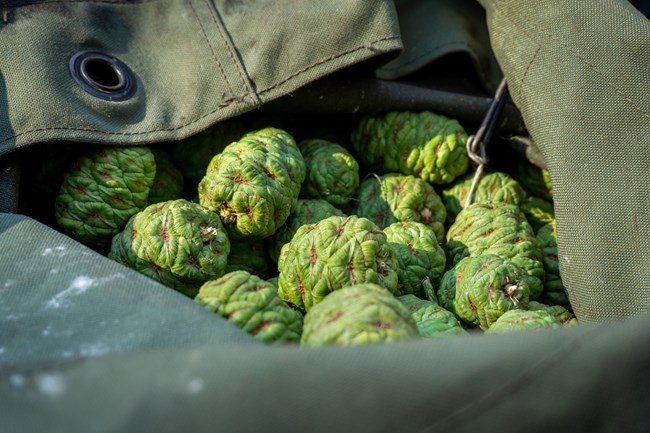
NPS Photo - Daniel Jeffcoach Examples of BAR Projects Proposed for Castle or KNP Complex FiresSequoia Grove RestorationGiant sequoias typically drop many seeds after a fire, and seedlings mainly grow in the first year post-fire. However, over 90 percent of first-year seedlings die. So, many seedlings need to establish after a fire for a few to survive and grow into mature trees. Scientists have surveyed grove areas that burned in the 2020 Castle Fire, and have seen very few seedlings in areas of high-severity fire. Without living adult trees to make more cones, sequoias will be lost from these sites without intervention. The Board Camp Grove, a remote grove in Sequoia National Park, is one of the groves with very few seedlings and few adult trees nearby to produce cones and seed. Park staff have proposed a plan to restore 48 acres in this grove. They are working with other scientists to collect cones from the crowns of living sequoias in or near this grove and grow seedlings in a nursery setting, with the intent to plant them in severely burned areas of the grove. For the KNP Complex Fire, park managers propose to restore 350 acres of severely burned giant sequoia groves. For the KNP Complex Fire, park staff are currently evaluating fire impacts to burned groves including field surveys of sequoia mortality and sequoia regeneration focusing on areas burned at high severity such as the southern end of Redwood Mountain Grove. These field evaluations will be used to consider whether any further action should be considered with respect to post-fire recovery in these groves. 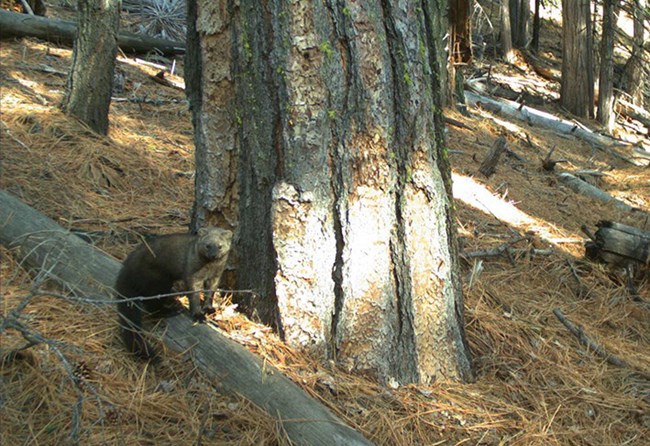
NPS Photo Restore Mixed Conifer Forest Fisher HabitatThe fisher is a member of the weasel family and about the size of a large house cat. The Southern Sierra Nevada fisher population was listed in the Federal Register as Endangered in 2020. The range for this small population of 150 to 300 fishers stretches from the Merced River in Yosemite to the southern parts of Sequoia National Forest. Geographical isolation has made this fisher population genetically unique and vulnerable to decline. Additional Burned Area Rehabilitation Projects and ResearchThe examples above focused on wildlife and vegetation needs; the NPS has also sought funding for additional staff to protect resources and support public safety and is identifying and evaluating the need to repair or replace infrastructure damaged by the fire. Examples include:
To help inform post-fire management actions, additional research will be needed that will require seeking other funds and partnerships. Information needs include:
Confused about BAER versus BAR?The examples provided in this table may clarify the difference.
Learn more about post wildland fire programs across the National Park Service.
|
Last updated: October 20, 2023
